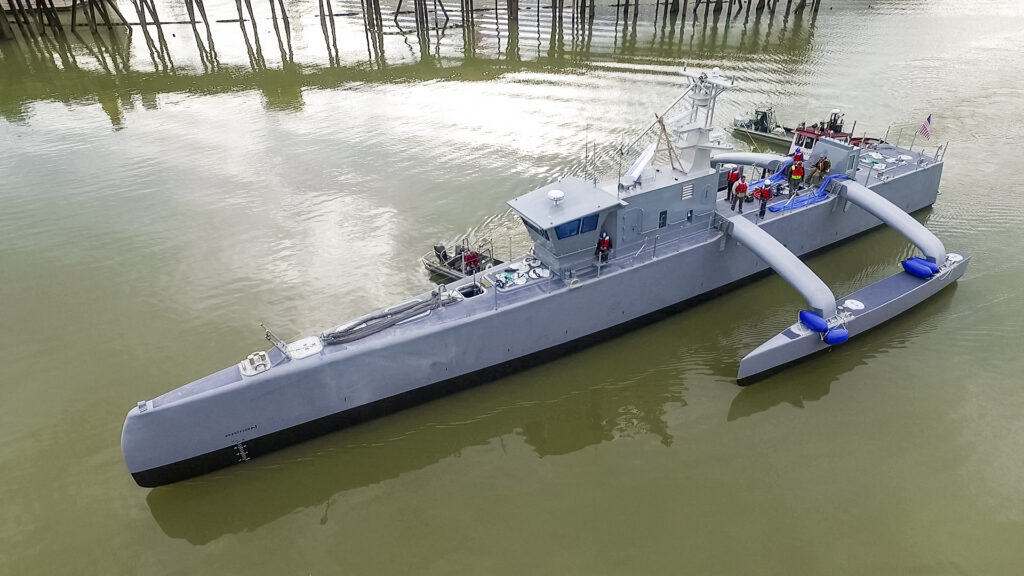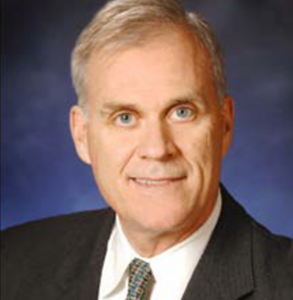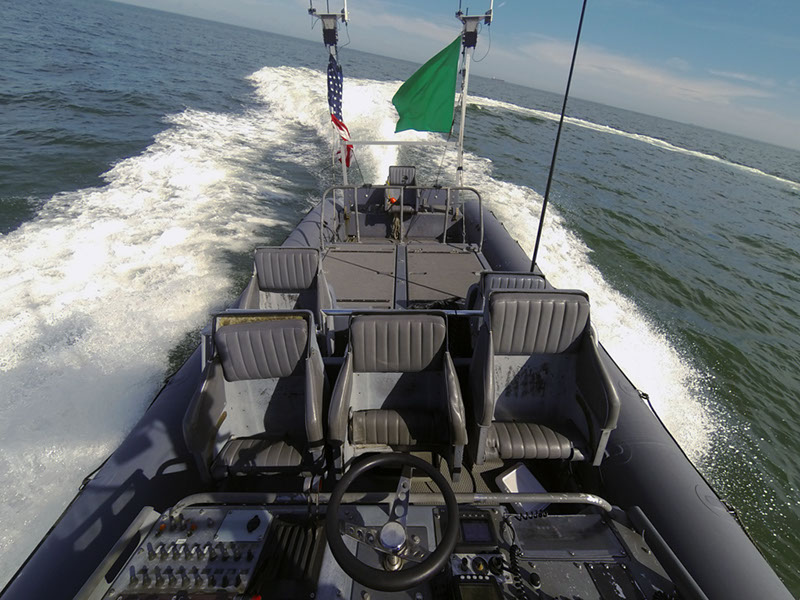SecNav Nominee Spencer Soft-Pedals Trump’s 355-Ship Navy, Touts Robots
Posted on

Spencer is enthused about robotic warships such as DARPA’s experimental unmanned scout ship, the ACTUV Sea Hunter.
CAPITOL HILL: Amidst a bipartisan lovefest of a confirmation hearing, Navy Secretary nominee Richard Spencer quietly and consistently downplayed the idea of a 355-ship fleet. The Navy now has 276 ships from supercarriers to minesweepers, President Trump promised 350 on the campaign trail, and the Chief of Naval Operations has officially assessed that he needs 355. But Trump’s pick to be the CNO’s boss didn’t seem committed to that number.

Richard V. Spencer
While “it is a great goal to have” and “a good number for people to focus on,” Spencer told the Senate Armed Services Committee, he also described the number in conditional terms such as “if in fact we grow to a 355-ship Navy…” and “whether it’s a 355-ship (fleet) or not….”
Instead, Spencer consistently emphasized what military analysts call capability — the power and sophistication of weapons systems — over capacity — how many weapons you have. (Basically, it’s quality vs. quantity). “Capabilities… that’s where the punch is,” he told the senators, enthusing particularly over robotic and unmanned systems. He even said, albeit in tortured language, that the US might achieve the power envisioned for a 355-ship fleet with fewer but more advanced vessels: “Whether it’s a 355-ship (fleet) or not, what we also ought to get our head around is, can we have a capacity number but have a capability that’s even greater than that?” Spencer said. “(I.e.) have the capability of a 355 (ship fleet) that might be a 300-ship Navy.”
“People have asked, ‘what do you think of the 355-ship Navy?’ and I said, it is a great goal to have,” Spencer said. “But I can’t tell you what the construct of that (future fleet) would be sitting here today, because I think unmanned (systems) — below the water, on the water, and in the air — is an area we’re just beginning to chip away at, and that’s going to provide some great yield for us.”

US Navy experimental unmanned boat.
In other words, Spencer is saying the future fleet may look very different from today’s, so the mix of ship types remains unclear — despite the fact that Adm. John Richardson, the CNO, having issued a detailed breakdown by class. Emerging technology may create opportunities for entirely new types of vessels, Spencer said, especially unmanned ones. Consciously or otherwise, he was echoing two independent studies commissioned by Congress as alternatives to the CNO’s 355-ship plan, which proposed large squadrons of robotic ships.
“355 is a good number for people to focus on. Do we know exactly what the mix is? I think, since we’re talking out a decade (from now), we might not know, and we shouldn’t know right now, since we have evolving technologies,” Spencer told the SASC. “If in fact technologies allow us to have different platforms, some that we might not even know of right now but that develop in five years, we should keep our eyes and ears open.”

Sen. Tom Cotton
Spencer is clearly thinking in the long term, beyond this administration. When Sen. Tom Cotton asked, “is the President’s budget request sufficient to build that 355-ship Navy?” Spencer replied that, “It would depend upon the timeline you would be giving the future Secretary of the Navy as a goal.”
In other words: Building up to 355 will take so long that whether we get there or not isn’t actually up to Spencer or to Trump. That’s probably true, given that various estimates put the timeline to reach 355 at a minimum of 18 years, but it’s not the answer you’d expect from someone enthusiastically committed to getting there.
Cotton wasn’t the only senator whose shipbuilding question Spencer answered with “it depends.” When Sen. Ted Cruz pointedly asked if the Navy needed more ships, Spencer carefully avoided saying “yes.”
“Do you believe we currently have sufficient capacity to meet the strategic requirements placed on the Navy?” Cruz asked.
“Ah, there might be two answers to that, senator,” Spencer relied. “Let me say that with the assets that we have right now, we are managing the best, in my overview, that we can. It comes down to risk management. Are we addressing every single risk? No, we’re prioritizing them. With more assets, more capability and more capacity, we could do a better job.”

Sen. Ted Cruz
How could the Navy get more assets, both Cruz and Sen. Dan Inhofe asked?
“If we take the full gamut of what’s available to us to tackle the 355-ship goal, we should be thinking outside the box,” Spencer said. “We should be thinking about possibly bringing things out of the Ready Reserve (of mothballed ships). We should be looking at ways to construct better, faster, cheaper; we’ll be looking at the frigate down the road” — the frigate being a relatively small, affordable ship that could be built in large numbers.
Overall, I found Spencer’s answers consistently nuanced and thoughtful, befitting his extensive background on the Defense Business Board and as a former Marine Corps officer. So, apparently, did the committee, with several members, including Cotton, openly stating their support and McCain, the often sharp-tongued chairman, pledging to see his nomination through before August. It’s easy to rally around a number. It’s much harder to wrestle with the costs, complexities, and trade-offs as Spencer, clearly, has already begun to do.
Subscribe to our newsletter
Promotions, new products and sales. Directly to your inbox.
